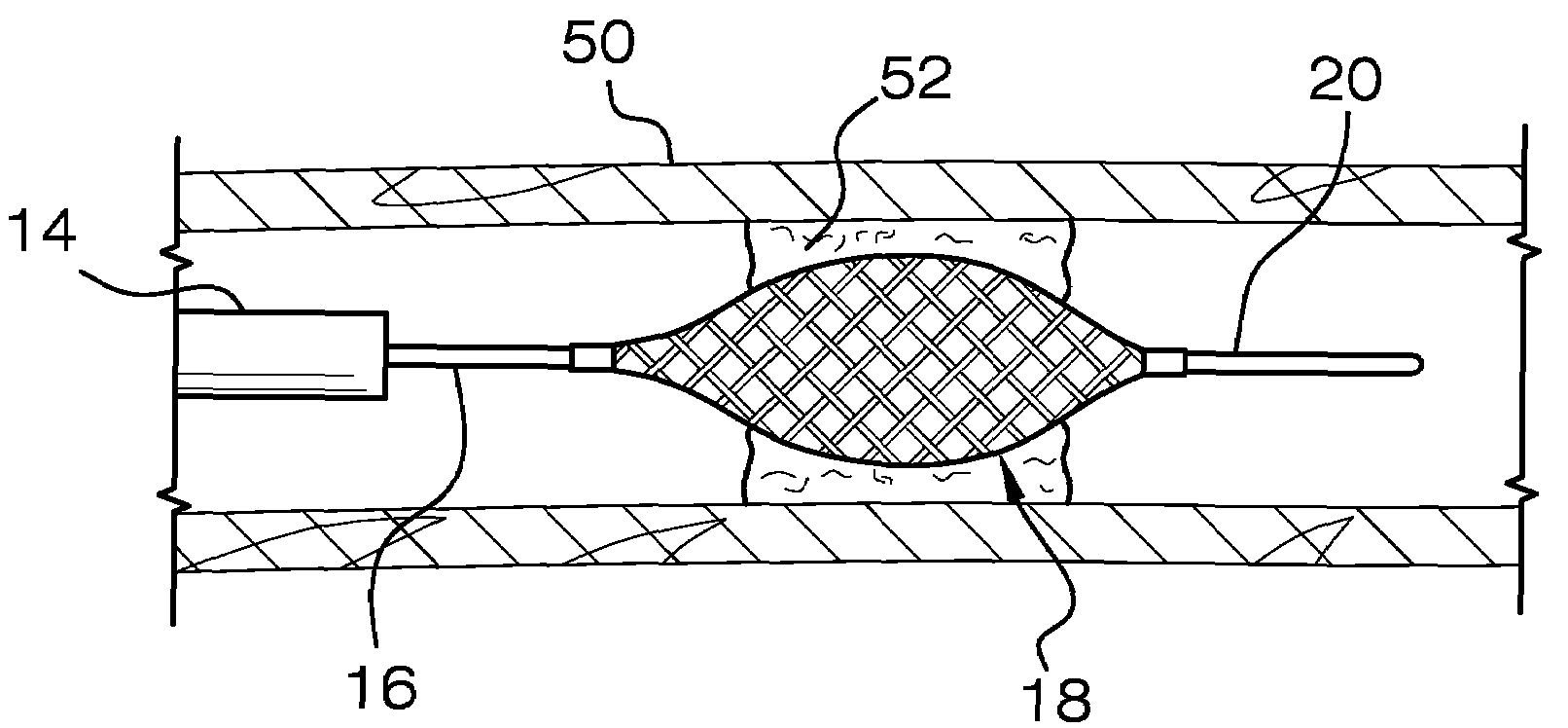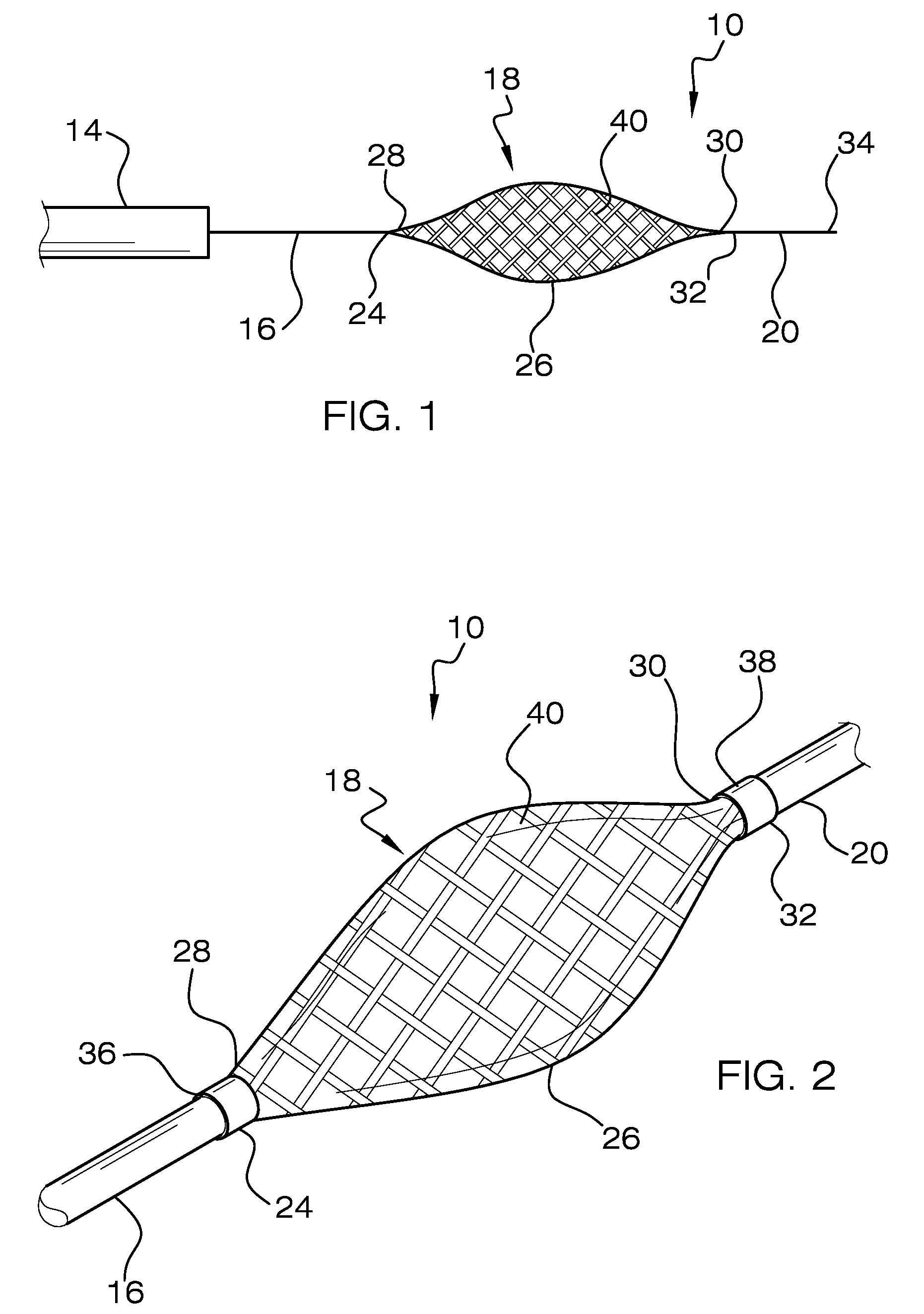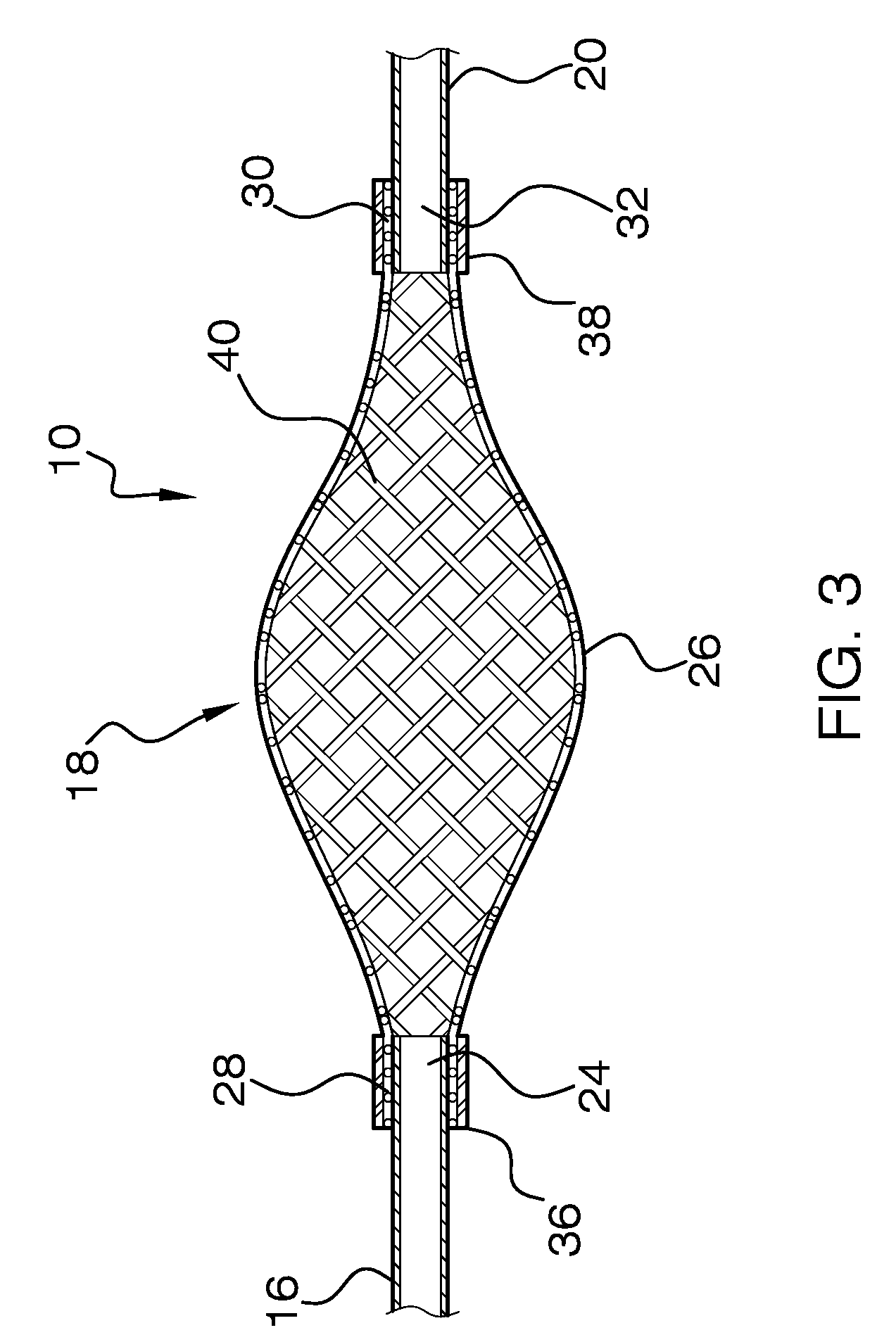Mechanical Embolectomy Device and Method
a technology of mechanical embolism and embolism chamber, which is applied in the direction of balloon catheters, diaphragms, surgery, etc., can solve the problems of limited utility of patients with large clots, significant time constraints of tpa therapy, and cerebral blood flow disruption
- Summary
- Abstract
- Description
- Claims
- Application Information
AI Technical Summary
Benefits of technology
Problems solved by technology
Method used
Image
Examples
Embodiment Construction
[0021]In FIGS. 1-2, there is shown an embolectomy device 10 according to the invention. The embolectomy device 10 is positionable in and movable within a catheter, such as microcatheter 14. The embolectomy device 10 includes a proximal elongated shaft such as proximal wire 16, an expander portion 18, and a distal elongated shaft such as distal wire 20. The proximal wire 16 includes a proximal end (not shown) and a distal end 24. The expander portion 18 comprises a body 26 having proximal and distal ends 28 and 30, respectively. The distal wire 20 includes a proximal and distal ends 32 and 34, respectively.
[0022]The body 26 of the expander portion is disposed about the long axis A of the embolectomy device 10, and is biased or otherwise moveable to extend or expand laterally outward when not constrained within an outer sheath, such as microcatheter 14. When body 26 of the expander portion 18 is not constrained and is fully extended or expanded laterally outward, as shown in FIGS. 1 a...
PUM
 Login to View More
Login to View More Abstract
Description
Claims
Application Information
 Login to View More
Login to View More - R&D
- Intellectual Property
- Life Sciences
- Materials
- Tech Scout
- Unparalleled Data Quality
- Higher Quality Content
- 60% Fewer Hallucinations
Browse by: Latest US Patents, China's latest patents, Technical Efficacy Thesaurus, Application Domain, Technology Topic, Popular Technical Reports.
© 2025 PatSnap. All rights reserved.Legal|Privacy policy|Modern Slavery Act Transparency Statement|Sitemap|About US| Contact US: help@patsnap.com



